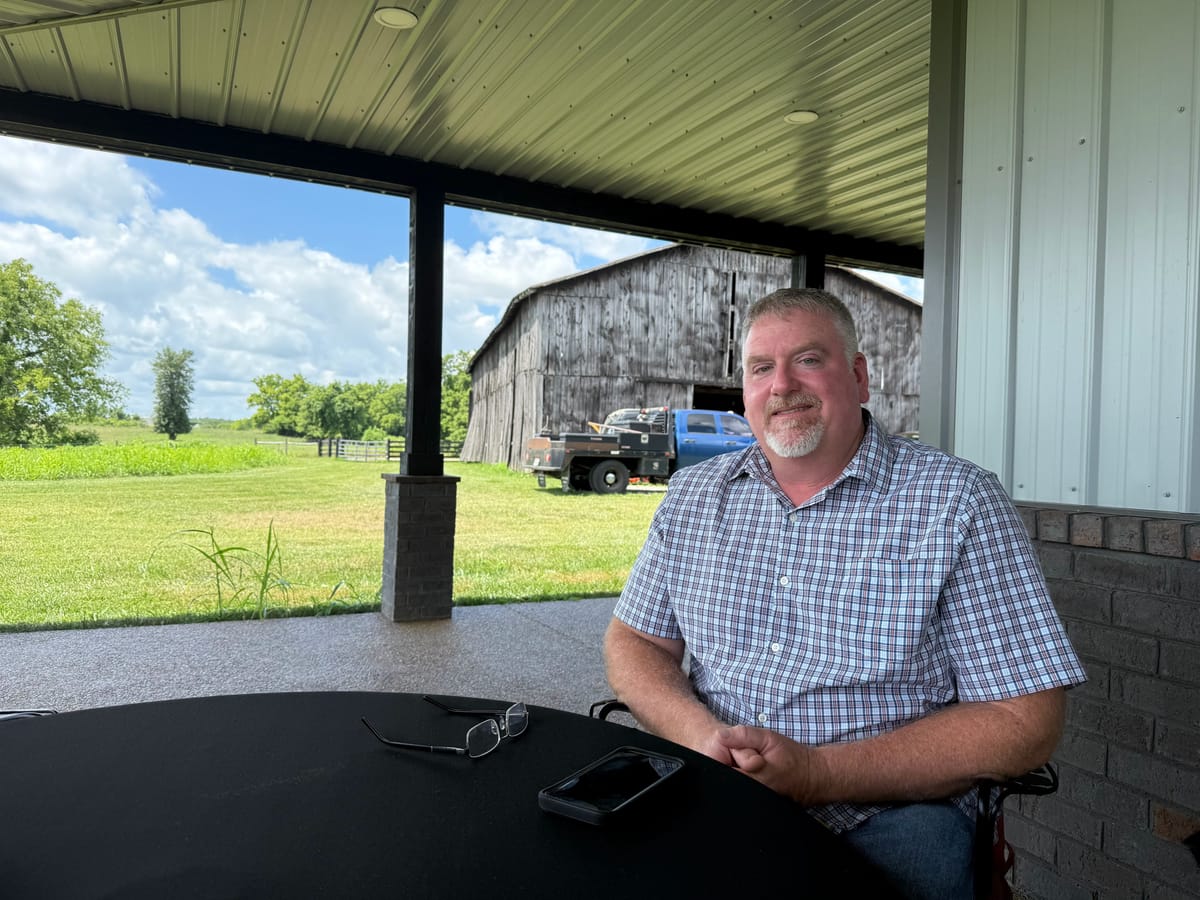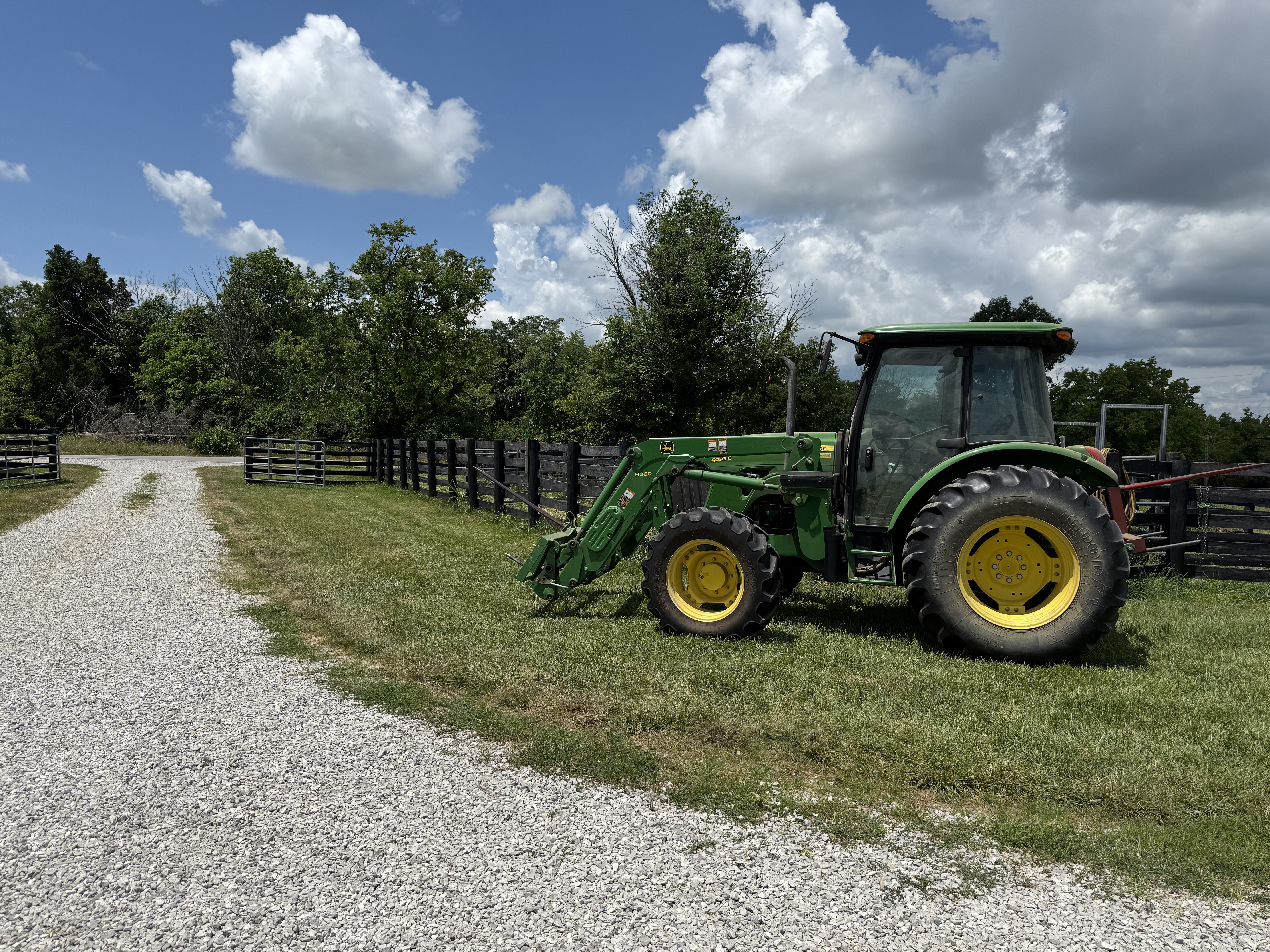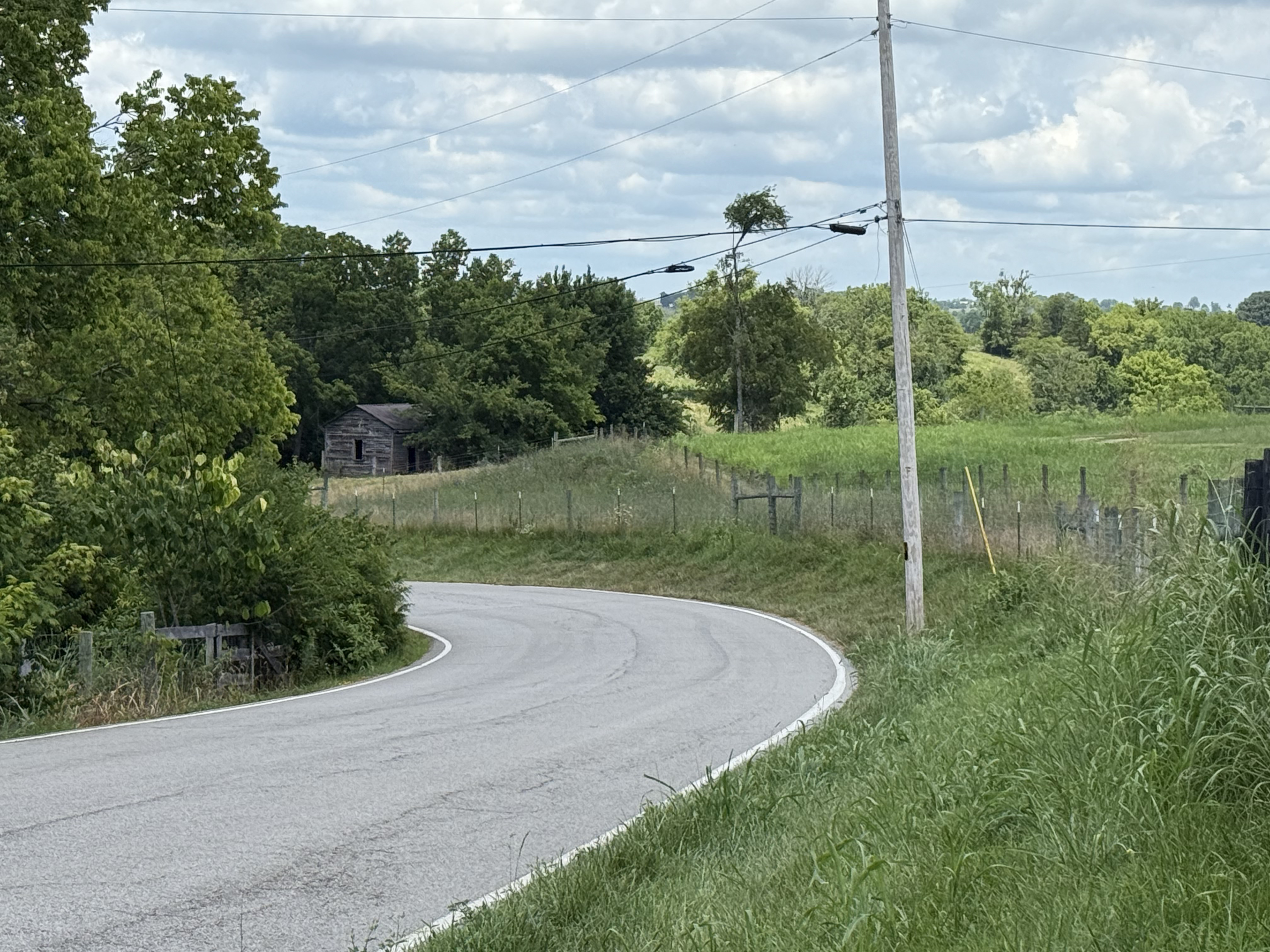Eminent domain case prompts question: Who decides where development happens?
Madison County cattle farmer says he doesn't know who he's fighting as state sues to build road through his farm

RICHMOND — His voice is even, never raised. He speaks of his anguish over the state’s suit against him for the right to cut through his cattle farm by way of a new road, dividing his farm in pieces, some of which will no longer be accessible for his herd to graze.
“They’re taking away what I love,” says the Richmond resident, Scott Gabbard, age 52. “I’m pretty sure they’ve taken some years off my life, too. My mind never stops thinking about it.”
Gabbard said he isn’t entirely sure who “they” are, but does know that at least one party to the decision is the state transportation cabinet (KYTC), which plans for the road to connect Madison County’s regional airport to State Highway 52, also known as Duncannon Lane, where it runs east of I-75. West of the interstate, it’s called Peytontown Road.
With Madison County’s well-funded airport, myriad acres of developable farmland, and I-75 running straight through it, the road construction is all part of the County’s status among any number of state, regional, and local officials, as the obvious location for development in Central Kentucky.
What’s not always so obvious is which, if any, of those officials are responsible for the decisions being made as to when, how, and where the infrastructure underpinning the vision of the County as an economic powerhouse should be built.
“I’m not against the airport. There are legitimate benefits I can see for the improvements, even if I also think it’s being overplayed,” Gabbard said. “But who am I up against? The airport board? The City of Richmond? The County? I don’t know who I am fighting.”
Gabbard recollected the multiple times he has approached local and county officials, only to be told the road was not their decision, that there is nothing they can do to help. “They all say they had nothing to do with it,” he said.
Life-long dream, crushed
Gabbard, an electrician who grew up in Berea and who has a degree in animal science from EKU, said he was unaware of any plans to build a road from the airport to Hwy 52 when he purchased the 148-acres more than 12 years ago. At the time, he simply thought he’d managed to start living his lifelong dream of farming cattle and working the land.
Now, his dream is tainted.
“Working the farm isn’t much fun anymore. They took all the joy from it,” Gabbard told The Edge during an interview conducted at his farm.
The KYTC document below indicates that the road project was made formal in 2016, and is included on page 156 of the current KYTC Six Year Plan. Whether the project was discussed much before that, and by whom is not publicly documented.
Trouble begins
Gabbard said his troubles began in August 2022 after US Congressman Andy Barr (R-KY) announced he’d procured 12 million dollars in federal funding for the project. Soon after, Gabbard said a team of KYTC engineers and others visited his property and began surveying it for potential routes.
During a town hall meeting held at the Kirksville Elementary School that December, KYTC displayed four options for where the road might run. Meeting attendees were polled as to which option they preferred. One was to improve the existing Caleast Road, which is more residentially developed than where Gabbard lives at the southern most point of Richmond, which, for now, is still mostly undeveloped.
Two other options ran through Gabbard’s farm, one path so close to the home he built for his family, it would have put his house at the road’s shoulder. The second one cut straight across the width of his farm. The other option was a tie-in road from Caleast Road, to Peytontown Road, near the interstate.
Another option on the survey was for there to be no new road built.
Below is the brochure handed out that night to citizens who attended the town hall.
Whatever the survey feedback was—KYTC officials told The Edge they would not disclose details about Gabbard’s case because it is currently in litigation—the state chose Gabbard’s farm for the route.
“I got them to at least change it being so close to my hay barn, and move it further out,” Gabbard said of negotiations he made with the KYTC. “I saw it as a win. I didn’t want them building at all, but it’s like football, where you just keep moving the ball down the field.”
Gabbard’s next play was to try and force the state to negotiate right then, instead of delaying the process and putting his and his family’s life in limbo. Instead, he received notification from the state about 18 months later, informing him of the need for access to 12 acres of his property to build the road.
Gabbard believes that the delay was intentional. “They had momentum by then, and it’s harder for a judge to tell them they can’t do what they’re doing once they get so far,” he said.
More than just the acreage
Constitutional eminent domain law requires land takings be in exchange for the property’s full market value. Gabbard does not wish to disclose the state’s offer for the 12 acres, but said it is “insulting”.
“I was offered a dollar figure for my property, and for them to build a fence along the new road, and [compensation] for a barn they were removing,” Gabbard said. “I was offered nothing for damages to the remaining property.”
He said the offer also does not account for how the road’s construction will disrupt his cattle operation from which he earns a portion of his income.
Worse still, he said, is that the state’s project includes plans to re-route the Ballard Branch of Silver Creek that winds through his farm’s middle acres. The road will cross the wooded creek, which is impassable except in one spot, essentially dividing his farm into four separate tracts of land, before it forks North toward Hwy 52.
Gabbard said he will either have to find a way to safely cross his cattle across the road to the partitioned land that has always been part of his pasture rotation, or abandon using it altogether, which he said is the likely outcome.

Past decisions, present ramifications
Gabbard said when he tells others what is happening to him, they either don’t believe him or think he is conspiratorial.
“People just think I’m crazy,” he said. “What’s crazy is that anyone can do this, take a man’s property for something he has nothing to do with. I don’t know who made the decision to do this.”
Madison County Judge Executive Reagan Taylor, one of the local officials Gabbard said he has approached multiple times, told The Edge there really is nothing he or any other official can do to help Gabbard reverse his fortune.
“It was determined years and years ago, prior to me being in this seat, that that would be a growth area, based on [Hwy] 52,” Taylor said in a sit-down interview at the Fiscal Court. “They planned for 52 to be expanded and widened to the Duncannon Exit, Exit 83 [off I-75].”
The DOT: ‘Department of They’
The “they” Taylor is referring to is the state’s General Assembly for one, but also the Transportation Cabinet, and appointees to the local district of the Kentucky Council of Area Development Districts, an organization that functions as part advisory group, part special interest group, as it liaisons on behalf of regions across the state to the General Assembly.
Members of the ADD’s are appointed by local and other officials and are responsible for making the case as to why certain infrastructure projects would be helpful to economic development in their respective districts. The Bluegrass ADD which represents Madison County would have been the one to advocate on behalf of the airport, which as previously reported, has been the focus of attention in Frankfort as key to development not only here but statewide.
“The locals might advocate for growth areas because the state is doing a [transportation] project,” Taylor said. “So, they advocate for an idea, and then years, or even years and years down the road, the project comes to fruition. Then other projects are possible. You would never have built a new [airport] road if the project on 52 had not been approved first. Buc-ees would never have been built on Duncannon if the state hadn’t already put in the exit,” Taylor said in the interview.
This is how Gabbard came to be in the danger zone for cattle farming, but in the end zone for industry — a project advocated for years ago, one which required other projects to be funded first, is now taking shape more than a decade after Gabbard bought the property on John Ballard Road, where it happens to intersect the road to the airport.

Day in court
After Gabbard rejected the state’s offer, the state filed suit in the Madison County Circuit Court, triggering the Court to appoint a board of three commissioners to assess the value of the 12 acres the state seeks to own of Gabbard’s farm.
Gabbard said their opinion came back about 20% less than what the state originally offered to buy the land, but offered slightly more to replace the barn and to build the fence. He expects his case will be heard in August and will determine what amount of money the state will ultimately pay him for the land. No matter the outcome for Gabbard, the state is getting their 12 acres and is building the road, he said.
One of the reasons Gabbard said he is disappointed with the state’s offer is that he believes much of the rest of his farm’s value will plummet once the road goes through it. Meanwhile, he believes the road will open up new development possibilities on the new road further north, where the land is more level than his, making the area attractive to developers who will pay far more than the state offered him.
“Once they get my land, it opens up a lot more opportunities for developers,” he said.
Next week: What is the Kentucky Council of Area Development Districts and how does it play a role in directing development across the Commonwealth? Who do the ADDs, which are unelected bodies, answer to and what if the public doesn’t support them? What was the Bluegrass ADD’s role in the case of the Madison County regional airport connector road?
The Edge in Berea is Madison County’s source for land use investigations. Become a paid subscriber today and never miss a post.
